Recombinant soluble, multimeric HA and NA exhibit distinctive types of protection against pandemic swine-origin 2009 A(H1N1) influenza virus infection in ferrets
- PMID: 20686020
- PMCID: PMC2937797
- DOI: 10.1128/JVI.01035-10
Recombinant soluble, multimeric HA and NA exhibit distinctive types of protection against pandemic swine-origin 2009 A(H1N1) influenza virus infection in ferrets
Abstract
The emergence and subsequent swift and global spread of the swine-origin influenza virus A(H1N1) in 2009 once again emphasizes the strong need for effective vaccines that can be developed rapidly and applied safely. With this aim, we produced soluble, multimeric forms of the 2009 A(H1N1) HA (sHA(3)) and NA (sNA(4)) surface glycoproteins using a virus-free mammalian expression system and evaluated their efficacy as vaccines in ferrets. Immunization twice with 3.75-microg doses of these antigens elicited strong antibody responses, which were adjuvant dependent. Interestingly, coadministration of both antigens strongly enhanced the HA-specific but not the NA-specific responses. Distinct patterns of protection were observed upon challenge inoculation with the homologous H1N1 virus. Whereas vaccination with sHA(3) dramatically reduced virus replication (e.g., by lowering pulmonary titers by about 5 log(10) units), immunization with sNA(4) markedly decreased the clinical effects of infection, such as body weight loss and lung pathology. Clearly, optimal protection was achieved by the combination of the two antigens. Our observations demonstrate the great vaccine potential of multimeric HA and NA ectodomains, as these can be easily, rapidly, flexibly, and safely produced in high quantities. In particular, our study underscores the underrated importance of NA in influenza vaccination, which we found to profoundly and specifically contribute to protection by HA. Its inclusion in a vaccine is likely to reduce the HA dose required and to broaden the protective immunity.
Figures

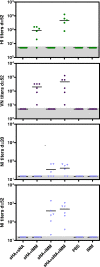
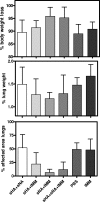
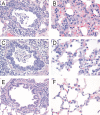
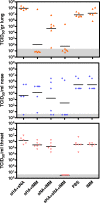
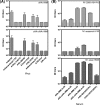
References
-
- Abed, Y., I. Hardy, Y. Li, and G. Boivin. 2002. Divergent evolution of hemagglutinin and neuraminidase genes in recent influenza A:H3N2 viruses isolated in Canada. J. Med. Virol. 67:589-595. - PubMed
-
- Brett, I. C., and B. E. Johansson. 2005. Immunization against influenza A virus: comparison of conventional inactivated, live-attenuated and recombinant baculovirus produced purified hemagglutinin and neuraminidase vaccines in a murine model system. Virology 339:273-280. - PubMed
-
- Chen, Z., K. Matsuo, H. Asanuma, H. Takahashi, T. Iwasaki, Y. Suzuki, C. Aizawa, T. Kurata, and S. Tamura. 1999. Enhanced protection against a lethal influenza virus challenge by immunization with both hemagglutinin- and neuraminidase-expressing DNAs. Vaccine 17:653-659. - PubMed
-
- Cox, M. M. 2008. Progress on baculovirus-derived influenza vaccines. Curr. Opin. Mol. Ther. 10:56-61. - PubMed
Publication types
MeSH terms
Substances
LinkOut - more resources
Full Text Sources
Other Literature Sources
Medical
Research Materials

